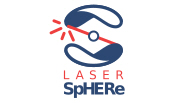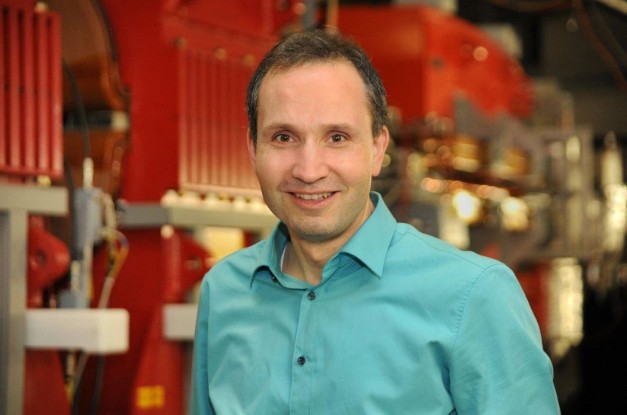The goal of our experiment, which is carried out at the COALA apparatus, is the measurement of high voltages in the range of 10 to 100 kV using precise laser spectroscopy of ions with a well-known transition frequency in the ion’s rest-frame [1]. We want to reach a precision of at least 1 ppm, which is of interest for many applications .
High voltage measurements are currently realized using high voltage dividers that convert a high voltage over a chain of resistors to a lower voltage with a precisely known dividing ratio. Commercial systems using this technique achieve a typical accuracy of 100 ppm (10kV ±1V). With a huge effort, a relative accuracy of up to 1 ppm (10kV +- 10mV) can be reached. Due to aging effects of the resistors, voltage dividers have to be recalibrated regularly.
Our approach is based on collinear laser spectroscopy . A laser beam is superimposed on a beam of fast ions. The resonance frequency f0 in the ions rest frame is shifted to
fL = f0 (1 – β) γ
in the laboratory frame, due to the relativistic Doppler effect. Here, β=v/c is the ion velocity as a fraction of the speed of light and γ is the time dilatation factor γ=1/(1-β2)1/2. If the laser is tuned to fL, the ions are resonantly excited and fluorescence light can be detected. With the known rest-frame frequency, the ion velocity can be determined with the formula given above. To suppress systematic errors as far as possible, we will work with two laser beams in a so-called pump-and probe technique as it is shown schematically in Fig. 1.
Hence, it is possible to determine high voltages by measuring optical frequencies and directly relate them to a natural constant, the frequency of the ionic transition. The experiment is installed in the basement of the Institute for Nuclear Physics. A photo of the beamline is shown in Fig. 2. As a result of a test experiment in 2017 an accuracy of 5 ppm was achieved, demonstrating the capability of the pump and probe technique [2]. The ion beam apparatus and the laser system are continuously advanced to further improve the accuracy. Therefore, topics for “Miniforschung”, Bachelor- and Master-Theses are always available. Some examples are listed here .
[1] O. Poulsen, Nuclear Instruments & Methods in Physics Research 202 (1982) 503.
[2] J. Krämer, K. König et al., Metrologia 55 (2018) 268.







